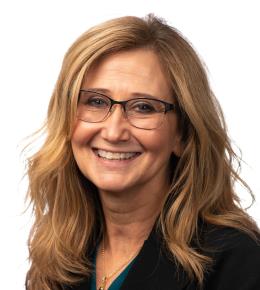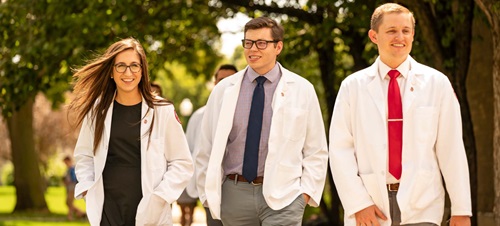
Medicine
Pursue your passion and calling to care for others with a strong foundational education in a hands-on environment.
A Career in Medicine is Immensely Rewarding and Exciting
Our medical students complete their training through an innovative three pillar curriculum. This training combines a foundation in biomedical sciences and early hands-on clinical experience.
Diversity enriches our learning environment. Sanford School of Medicine is committed to recruitment and retention of diversity at all levels of our school. We also provide many programs to help us promote and enhance diversity.
Select students are able to complete their clinical training in rural communities through our FARM program. We're focused on rural medicine and want our students to experience this type of practice by living and training in rural communities.
To best prepare our graduates to be skilled and confident physicians, our curriculum focuses on what we call the three pillars of medicine. This curriculum offers more integration rather than individual courses and allows students to individualize their learning.
Degrees & Offerings
Medicine (M.D.)
DoctorateTo best prepare our graduates to be skilled and confident physicians, our curriculum focuses on what we call the three pillars of medicine. This curriculum offers more integration rather than individual courses and allows students to individualize their learning.
Concurrent Medicine, Business Administration (M.D./MBA)
Concurrent ProgramConcurrent Medicine, Public Health (M.D., MPH)
Concurrent ProgramProgram Details
Graduate
College
Department
Contact
Admissions Requirements
Known for Excellence
Our Three Pillar Schedule
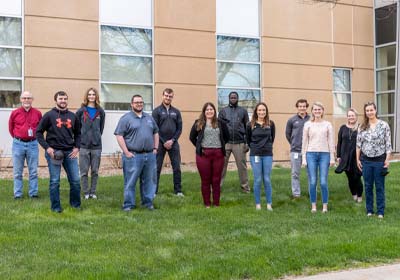 The first pillar establishes a strong foundation through 18 months of integrated basic science, in which students will learn anatomy, biochemistry, physiology, microbiology, pathology and pharmacology interwoven into organ-system blocks, such as cardiovascular and gastrointestinal.
The first pillar establishes a strong foundation through 18 months of integrated basic science, in which students will learn anatomy, biochemistry, physiology, microbiology, pathology and pharmacology interwoven into organ-system blocks, such as cardiovascular and gastrointestinal.
Education research shows that students learn and retain basic science better when they can apply it to patient care early in their education. We blend that foundational teaching with regular patient care experiences and cases.
The second pillar focuses on acquiring clinical skills, integrating learning across specialties and focusing on experiential learning. Students work closely with experienced physicians during longitudinal integrated clerkships, where students spend a half day per week in a different discipline, like pediatrics, surgery and neurology. Students may also take part in a rural track, which allows them to experience medicine in a smaller community.
The third pillar includes advanced medical knowledge. It give students an opportunity to delve more deeply into areas of interest through electives and expanded opportunities for research.
Clerkships
The longitudinal integrated clerkships allow students to complete all their clerkships simultaneously instead of instead of spending eight weeks in a block clerkship and then moving on the next.
Through this method, students will:
- Learn clinical and professional skills at a deeper level because they are applying concepts in several settings at once.
- Establish longer relationships with patients and be able to take part in a patient's care for the course of an illness or pregnancy.
- Establish longer relationships with faculty and experience more meaningful mentoring.
We designed a yearlong clinical education experience that begins with short clerkship blocks, primarily focusing on hospital care, followed by nine months of longitudinal integrated clerkships.
Career Pathways
Whether you want to be a primary care physician or a specialist, our flexible curriculum means you are exposed to many different areas of medicine during your education.
If you're not yet sure what you want to do with your medical degree, our program gives you early opportunities for unique electives in a wide variety of clinical and research areas to help you decide.
USD is home to more than 170 student organizations, including several housed in the Sanford School of Medicine. You may be interested in serving as class president or working with the Medical Student Association, developing new skills and connecting with peers.
Graduate & Professional Student Association (GPSA)
Join your fellow graduate and professional students at USD. We aim to build a sense of community between graduate and professional students. Build your resume, network with others and gain experience and the unique opportunity to represent the interests of graduate students to the greater campus and community.
Medical Student Wellness Committee
Each class selects a wellness officer as part of the Medical Student Wellness Program. Wellness officers determine how to use a budget for promoting wellness in each of their respective classes. Previous events include yoga, picnics, movie nights and other activities.
Women in Medicine/American Medical Women's Association (AMWA)
This group improves the understanding of women’s health issues and addresses issues faced by female physicians. First and second-year medical students of all genders are encouraged to participate. Only female students may be officers for positions involving the AMWA portion of this group.
Your Academic Department

Medical Student Affairs
Aiding through all aspects of Medical School through a web of resources.
Faculty & Staff
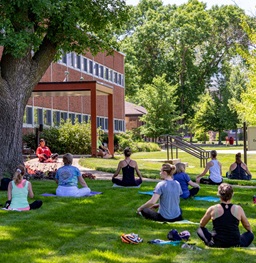
Well Students, Well Doctors, Well Patients
The Sanford School of Medicine Wellness Program provides students with the resources to recognize the need for and to foster self-care, allowing them to better provide compassionate patient care. The program is part of a curriculum designed to support personal growth and reflection over the four years of medical school.
Student-Directed Wellness Program
Wellness officers are elected for each class. They oversee their budget and how they want to use it to promote wellness for each of their respective classes. Examples of activities include:
- Yoga and other fitness classes
- Self-defense classes
- Study-a-thons with snacks and massages
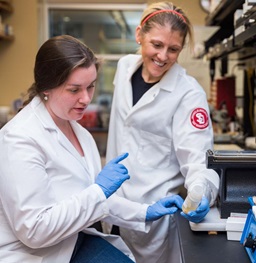
Mentoring and Advising
As a student, you also have a support system including basic sciences advisors, clinical mentors and advisors, and peer mentors from the class above. In addition, you'll have access to a learning specialist, supplemental instructions and one-on-one tutoring. As the Step 1 licensure exam is one of the greatest causes of stress, several sessions are devoted to Step 1 prep. Career advising is another component and starts in the first year of your medical training and continues until you are matched.
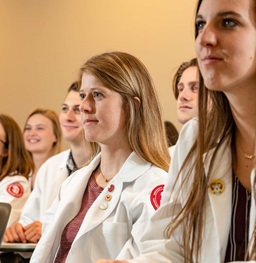
Stress Management and Resilience Training
The Stress Management and Resilience Training program provides students with skills to promote lifelong optimal health. This involves programs built into the curriculum, such as:
- Daylong retreats that address the stress points of medical education, including the transition to medical school and Step 1 prep
- Sessions on mindfulness meditation practice, addressing cognitive distortions and the impostor syndrome, relaxation techniques, breathing techniques to reduce anxiety and more

